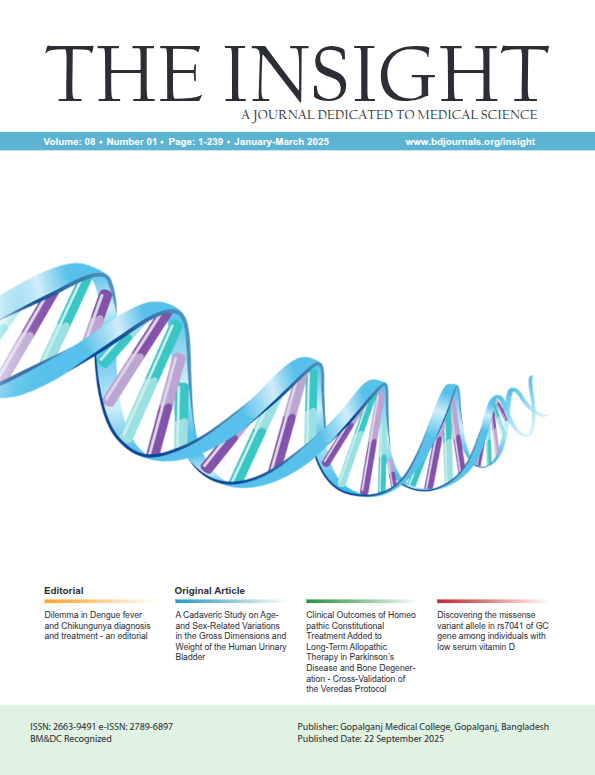Abstract
Introduction: The human urinary bladder undergoes significant anatomical changes influenced by age and sex, with important implications for clinical, surgical, and forensic practices. Understanding these variations is essential for establishing normative data applicable to diverse populations. Method & Materials: A descriptive cadaveric study was conducted on 70 human urinary bladders collected postmortem at Sylhet MAG Osmani Medical College between January and December 2015. Samples were stratified into three age groups (10–20, 21–40, 41–65 years) and by sex. Bladders were weighed, their capacities measured, and key anatomical distances recorded. Histological sections from the bladder wall were analyzed. Data were processed using SPSS v21.0, with significance set at p < 0.05. Results: The mean bladder weight was 88.81 ± 25.57 grams and capacity 35.23 ± 7.48 ml. Bladder weight peaked in the 21–40 years age group (98.36 ± 21.80 grams), being significantly higher than in both younger (69.27 ± 31.78 grams, p < 0.001) and older individuals (86.16 ± 16.98 grams, p = 0.039). Males had consistently higher bladder weights across all age groups compared to females, with statistically significant differences (p < 0.05). Conclusion: This study confirms substantial age- and sex-related morphometric differences in the human urinary bladder, with maximum bladder weight observed in early adulthood and consistently higher weights in males. These findings provide critical reference data for clinical assessment, surgical planning, and forensic evaluations. Future studies with larger, more diverse populations and in vivo imaging are recommended to enhance these insights.

This work is licensed under a Creative Commons Attribution 4.0 International License.
Copyright (c) 2025 The Insight





 PDF
PDF